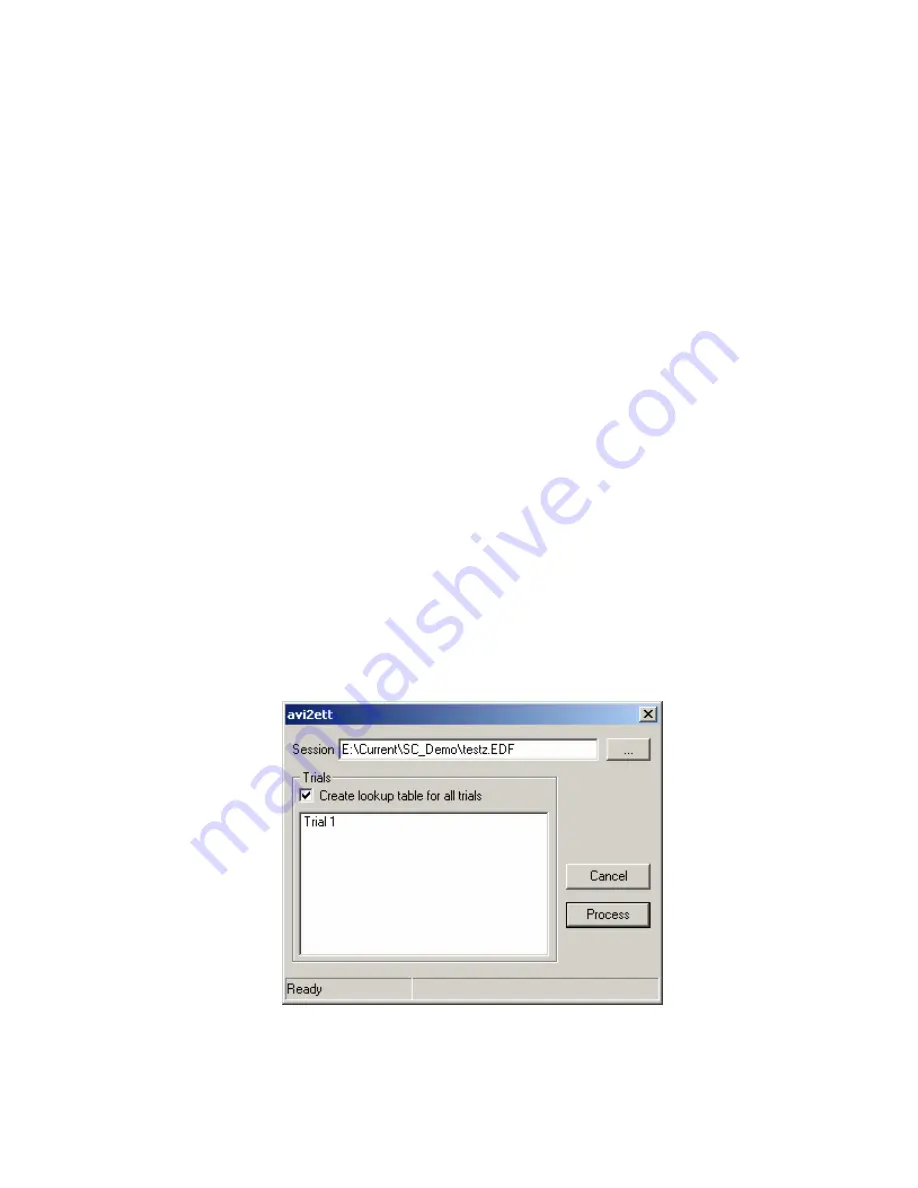
EyeLink II Scene Camera User Manual
©
2004-2007 SR Research Ltd.
50
5. Data Playback with SceneLink Application
The SceneLink application can also be used to play back a scene camera
recording. During playback, gaze cursor positioning is generated from merging
EyeLink data file with scene camera video files and is synchronized with the aid
of binary millisecond eye data time code written to every scene camera field.
This synchronization is better than one eye data sample (4 msec). During
playback, the user can also dynamically change cursor type and control
playback speed.
5.1 Opening a Playback Session
To start eye data playback, click on “File
→
Open Playback Session” from the
SceneLink application menu. (Recent sessions SceneLink recording sessions
are listed in the “File -> Recent Sessions” menu.) This will prompt for an EDF
file name. Go to the directory where the EDF files are stored and select the
target file. Currently it is assumed that the EDF file name matches the .avi file
name and that these files are stored on the same directory.
To run a synchronized playback of eye movement data over the scene video, a
file containing a lookup table between the scene camera frame number and
EDF time should be created. To do this, click “View -> Build Lookup Table”
from the application menubar. In the following “avi2ett” dialog box, set the
“Session” field to the EDF file (with path information). The user can choose to
process all trials by checking “Create lookup table for all trials” checkbox or to
select some of the trials in the list to process those selected ones only.
Figure
5-1. Creating Lookup Table for a Recording




















